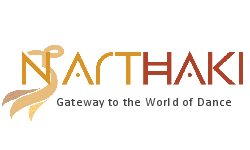
|   |

|   |
Ram revisited - Kasturika Mishra e-mail: kasturikafeministpoetry@gmail.com Photo: Innee Singh May 22, 2025 "Angikam bhuvanam yasya vachikam sarva vangmayam aharyam chandra taradi tam numah satvikam Shivam." The qualities of a natural dancer like Nataraja are described in the stotram. This has been the sole aim of any good Indian classical dancer who wishes to create naturally gifted students. Witnessing Gauri Diwakar over the years, one knows that she is constantly evolving a dance language of her own, rooted in classicalism yet modern in approach. She has been passing the legacy of effective choreography to her disciples. Even at tender age and with no practical knowledge, they are exposed to dance as a therapy. The annual festival of GDSF (Gauri Diwakar Sanskriti Foundation) this year was loosely based on characters of Ramcharitmanas. She deftly divided the sections into seven segments and used her students from different stages of learning into each segment. In the first segment, she introduced her earliest bunch of young girls by the basic footwork "Ta thei thei tat" equating it with Tulsidas' first pada that evokes Saraswati, Ganesh and all celestial members. The hasta mudras from Abhinaya Darpana and the moods (navarasa) namely raudra, bhayanaka, adbhuta, veera, bibhasta, shringara, karuna, hasya, shantam was a welcome sight. In an era where it is difficult to introduce Indian dance to students the minimalistic approach to focused learning has been hallmark of GDSF. The next segment 'Prashikhyan' started with training of Ram, Lakshman, Bharat, Shatrughna in sword fighting, archery, sowing, reaping, watering farm produces and horse riding. The high point of this segment was the symmetrical amalgamation of three male and one female dancers. The 'Svaha' moment was masterly woven with Tulasidas' lines "Dharma ki gati sukhdai". It was heartening to see male dancers taking on stage space. The light design from various points of the stage was dexterously used by Milind Srivastav keeping in mind the rectangular contour of the stage. Samiullah's music composition and voice captured the essence of Ramguna gaan for the audience to an ethereal plane. 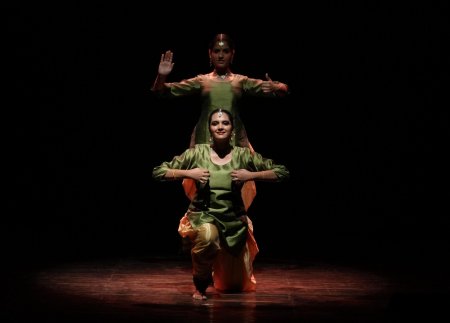 'Pratigya' segment with Soumya Narang and Aishwarya Verma playing Ram and Seeta captured the puritan conjugal life of Ekapatnivrata Ram. Maryada Purushottam Ram, epitome of ideal husband, son, warrior and divinity was defined by the duo in "Jabahi Raghupati sanga siya chali". The royal elephantine movement of the couple engrossed in love was depicted in madyalaya teentaal that love travels anywhere if the foundation is strong and is a binding force to work forever. In the 'prabal' segment the main protagonist was Hanuman. The most recent attack and 'operation sindoor' was juxtaposed with Hanuman's red smeared body in the lines "laal deha laali". Many teary eyed citizens in the audience caught the moment and related with the Indian soldiers. The fearless son of the wind god played with the moon as his bat and ball. 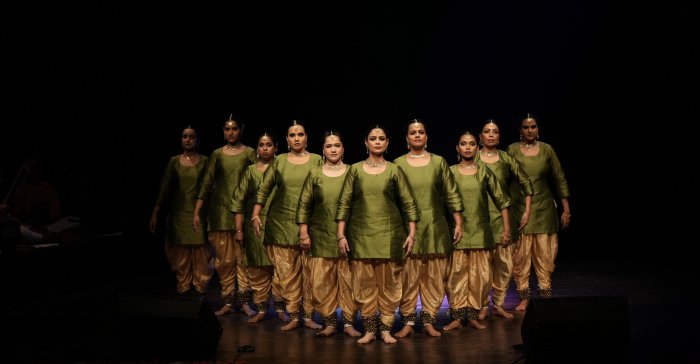 In an attempt to put entire Lanka on fire, Gauri put similes in place of Indian army's drone attack on Pakistani military stations. Fearless and devoted to Shri Ram, Hanuman even tore up his chest to showcase how Ram lives forever in his heart. Ganya Sethi and Kirti Chawla within Kathak parameters displayed the limb and hand movement of the monkey god. The next segment of 'Prakand' was dedicated to Ravana, Gauri knows the importance of Ravana in Ramcharitmanas and experimented with the ten faces of Ravana in ten bodies. Somya Narang, Aishwarya Verma, Tanuja Bora, Sunaina Sharma, Khushboo Kukreja, Ganya Sethi, Kriti Chawla, Happy Biswas, Richa, and Niktita Parashar moved in to each other on a dong percussion beat to show the magnanimous grandeur of the demon king Ravana. The erudite scholar lived in his natural habitat, worshipped Nataraja, the king of dance. The ten faces of the dancers moved in concentric circles to Nataraja namo namah. The concluding piece of the evening was dedicated to 'prasannata' meaning happiness. When Raja Ram was anointed as king of Ayodhya after returning from his 14-year exile in forests, his subjects came in hordes to greet and pray for his well-being in the coronation ceremony. Creative journeys are tough if you are doing a thematic presentation year after year sowing the seed of choreography in your kids. Such experimental productions do enhance the quality of cultural education. 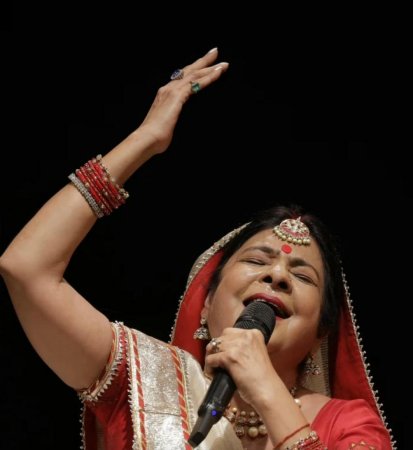 Malini Awasthi As part of the evening, Malini Awasthi too regaled the audience with many rare folk songs on the life of Ram. Being a staunch supporter of government activities and steps for upholding Indian nationalism, she also sang a vande mataram poem that was written in Indian jails during independence movement and the entire hall was left mesmerized by her sonorous performance. 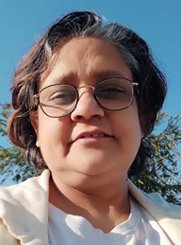 @Kasturika Mishra is a poet, writer, and dance critic. |